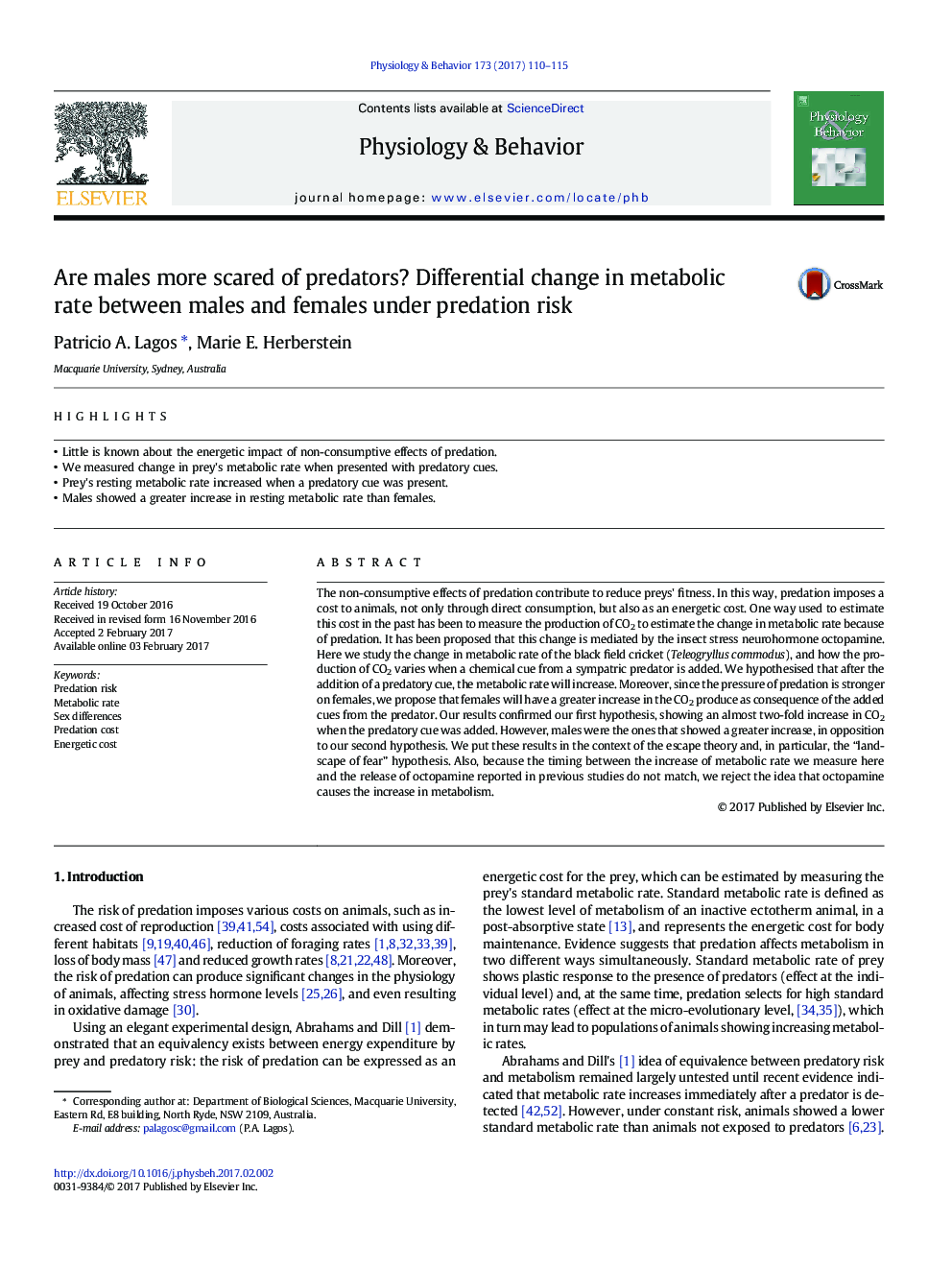| کد مقاله | کد نشریه | سال انتشار | مقاله انگلیسی | نسخه تمام متن |
|---|---|---|---|---|
| 5593921 | 1571146 | 2017 | 6 صفحه PDF | دانلود رایگان |
عنوان انگلیسی مقاله ISI
Are males more scared of predators? Differential change in metabolic rate between males and females under predation risk
ترجمه فارسی عنوان
آیا مردان بیشتر از شکارچیان ترسناک هستند؟ تغییر دیفرانسیل در میزان متابولیسم بین مردان و زنان تحت ریسک پیشروی
دانلود مقاله + سفارش ترجمه
دانلود مقاله ISI انگلیسی
رایگان برای ایرانیان
کلمات کلیدی
ریسک جبرانی، سرعت سوخت و ساز، تفاوت های جنسی، هزینه پیش پرداخت، هزینه انرژی
موضوعات مرتبط
علوم زیستی و بیوفناوری
بیوشیمی، ژنتیک و زیست شناسی مولکولی
فیزیولوژی
چکیده انگلیسی
The non-consumptive effects of predation contribute to reduce preys' fitness. In this way, predation imposes a cost to animals, not only through direct consumption, but also as an energetic cost. One way used to estimate this cost in the past has been to measure the production of CO2 to estimate the change in metabolic rate because of predation. It has been proposed that this change is mediated by the insect stress neurohormone octopamine. Here we study the change in metabolic rate of the black field cricket (Teleogryllus commodus), and how the production of CO2 varies when a chemical cue from a sympatric predator is added. We hypothesised that after the addition of a predatory cue, the metabolic rate will increase. Moreover, since the pressure of predation is stronger on females, we propose that females will have a greater increase in the CO2 produce as consequence of the added cues from the predator. Our results confirmed our first hypothesis, showing an almost two-fold increase in CO2 when the predatory cue was added. However, males were the ones that showed a greater increase, in opposition to our second hypothesis. We put these results in the context of the escape theory and, in particular, the “landscape of fear” hypothesis. Also, because the timing between the increase of metabolic rate we measure here and the release of octopamine reported in previous studies do not match, we reject the idea that octopamine causes the increase in metabolism.
ناشر
Database: Elsevier - ScienceDirect (ساینس دایرکت)
Journal: Physiology & Behavior - Volume 173, 1 May 2017, Pages 110-115
Journal: Physiology & Behavior - Volume 173, 1 May 2017, Pages 110-115
نویسندگان
Patricio A. Lagos, Marie E. Herberstein,
